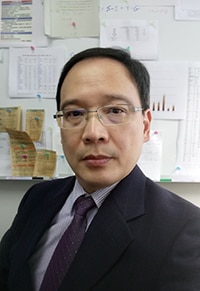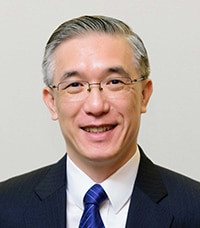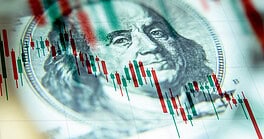Taiwan’s economy has thrived on electronics manufacturing. Now, with a tightening labor market and new competitive pressures, the island is figuring out how to reshape its role in the changing global economy.
With a GDP of $588.3 billion, Taiwan’s economy is the world’s 23rd largest, ahead of Poland and behind Sweden, according to International Monetary Fund data. Real GDP growth for 2017 was 2.86%, stronger than had been forecast.
At the same time, demographics are impacting the labor market and spurring technological upgrades. Taiwan’s unemployment is just 3.6%, and its birthrate is the third lowest in the world. “You can’t rely on the supply of labor to boost the economy,” says Raymond Yeung, chief economist for Greater China at ANZ Bank.

In 2017, annual exports were $317 billion, with 41% destined for mainland China or Hong Kong; 12% went to the US. “The only reliable economic engine is exports,” says Darson Chiu, research fellow at independent think tank Taiwan Institute of Economic Research (TIER). “Consumption and investment have been very slow for years.” As the global economy changes, how is Taiwan adapting?
Taiwan’s exports and economy are structured around electronics manufacturing. According to TIER, roughly three-fourths of Taiwanese exports are intermediate goods, with many geared toward information and communications technology industries. “If you’re looking for specific parts and components, it won’t be too difficult to find a partner in Taiwan,” Chiu says. In January, Taiwan’s manufacturing Purchasing Managers’ Index registered its 23rd straight monthly increase.
Moving Up and Out
Two of Taiwan’s largest manufacturers—Taiwan Semiconductor Manufacturing Company (TSMC) and Hon Hai/Foxconn Technology Group—are central to the Apple supply chain. “To some extent, Taiwan is an Apple economy,” says Yeung.
These companies, however, are increasingly manufacturing outside of the island. In 2017, TSMC announced plans to construct a $3 billion fabrication plant in Nanjing, China. Owing to local and federal incentives, Foxconn is moving manufacturing to the US. With $4 billion in incentives and relaxed environmental restrictions, Foxconn is building a flat-screen plant in Wisconsin—creating some 13,000 jobs there, not in Taiwan.
Competitors are also emerging. Mainland Chinese and Southeast Asian electronics manufacturers are progressing up the value chain, challenging Taiwan. Mainland Chinese petrochemicals and commodity producers have also eroded Taiwanese market share.
To move into higher-value manufacturing, Taiwan is developing its own “Silicon Valley.” The government is supporting initiatives aimed at smart machinery, clean-energy technology, the Internet of Things, defense, biotech and pharmaceuticals. From 2018 through 2021, for example, Taiwan’s Ministry of Science and Technology is allocating 1 billion Taiwan dollars (US$34.3 million) annually toward the local semiconductor industry.
Given the labor market, companies are exploring robotic production methods. In late 2017, TSMC announced it would build a 3-nanometer-chip plant, which could cost more than $20 billion, in southern Taiwan. This year, Microsoft announced plans to build a $33.2 million artificial-intelligence research-and-development hub in Taiwan.
Although automated processes can replace some employee tasks, there is still a need for human expertise. “They need to spend more on R&D and attract more foreign workers to reside in Taiwan, which is critically important,” Yeung says. He adds that Taiwan is an attractive place for foreign professionals to live.
New Imports
To increase imported skilled labor, the government passed a bill in October 2017. It relaxes visa, work-permit, residency, health insurance, tax and pension regulations on foreigners. According to the 2017–2018 Global Competitiveness Report by the World Economic Forum, which assesses the competitiveness of 137 economies globally, Taiwan ranks 15th in competitiveness.
Low private-sector wages, however, make it difficult to hire and retain talent. Taiwan’s GDP per capita is $25,893. According to Chiu, though, 2018’s real wages are on par with 1985 levels, and corporate profits have not been distributed to employees.
To address this, government officials are increasing the minimum wage. In January, the monthly minimum wage was raised to 22,000 Taiwan dollars (US$725), a 4.5% bump for more than two million workers. Within five years, the minimum monthly wage could hit 30,000 Taiwan dollars.

These initiatives could benefit employees, but they also have adverse effects. According to Chiu, Taiwanese and foreign direct investment have been low for 20 years, and these policies further encourage capital allocators to look elsewhere. “Because of these reasons, investment has not been a very reliable engine for Taiwan’s economy,” Chiu says.
This low overall investment is one of the factors hampering financial-services firms. According to Lo Wei, chief economist and vice president at Fubon Financial Holdings, the industry is fragmented and overbanked. “Taiwanese corporations don’t have strong investment incentive,” he says. “Therefore, potential returns for banks are relatively limited, but the risk is relatively high. …Taiwanese financial institutions need to consolidate and increase in scale, so they can compete with other Asian institutions.”
According to World Bank data, more than nine-tenths of Taiwanese over 14 years of age have at least one bank account. With abundant conventional banking services and broad financial inclusion, there is less incentive for Taiwanese to adopt fintech solutions. Unlike markets that have adopted mobile payments, cash and credit cards are standard in Taiwan.
“Taiwanese financial institutions are lagging mainland China [in fintech],” Wei says. He noted, however, that Taiwanese corporations realize the importance of introducing innovative solutions.
Taiwanese regulators are more welcoming of certain fintech, such as cryptocurrencies and initial coin offerings, than are mainland China and South Korea. Last December, the legislature passed the Act on Financial Technology Innovations and Experiments, loosening regulations on experimental financial technologies.
The aging demographic is also increasing public pension obligations and burdening younger workers. Chiu says citizens lack faith in public retirement options. Accordingly, they save. In December 2017, Taiwan’s gross savings rate was 34%.
“Instead of trusting in pension-fund management or trusting the public policy, people tend to increase their own savings,” Chiu says. “There’s a lot of potential.” As laborers become retirees and savers become investors, they will need more insurance options, retirement products and generational-planning services.
Going South
In addition to serving new Taiwanese client segments, banks are also looking to address new geographic markets. In February, Beijing policymakers from 29 government agencies introduced 31 measures meant to entice Taiwanese dollars to the mainland.
“Mainland China very much welcomes Taiwanese banks,” says Wei, “because they feel it is relatively straightforward.” Beyond shared language and culture, Wei says, Taiwanese financial institutions are adept at evaluating mainland risk. “This is a Taiwanese advantage,” he believes. Additionally, Taiwanese and mainland Chinese information systems are similar. “Western banks’ operating technology is very different from mainland China’s,” he explains.
In recent years, as part of the Southbound Policy, Taiwan businesses and the government have pushed greater social and economic interaction with 18 Asia-Pacific countries. For example, tourism restrictions were eased. Consequently, Taiwan had a 30% increase in Southeast Asian tourists in 2017.
Taiwanese banks are participating, too. They lend to Taiwanese corporations expanding overseas and also set up local bank operations themselves in foreign markets. Fubon has three branches in Vietnam, offering personal credit cards and corporate lending.
“The Southbound Policy is encouraging banks to expand in Southeast Asia,” Wei says. Market openness, industry development and risks vary by country; but many markets welcome the professional and technological expertise that Taiwanese banks provide.
Taiwan has resources to support outward-bound policies. In January, Taiwan had $455.7 billion in foreign reserves, representing 77% of GDP.
Although the central bank has recently undergone organizational changes, its policies are expected to remain consistent with previous administrations. On February 26, deputy governor Yang Chin-long succeeded long-serving Perng Fai-nan as central bank governor.

ANZ’s Yeung doesn’t expect the Central Bank of the Republic of China to raise interest rates. “We don’t expect any major change, in terms of the overall policy on the central-bank side. On the fiscal side, Taiwan has never relied on fiscal policy to boost the economy,” Yeung says.
Going forward, analysts are generally neutral to slightly optimistic on the economy’s prospects over the next year. TIER’s Chiu forecasts that 2018 GDP growth will be 2.34%. “The cyclical recovery will probably continue, but will not be very strong,” he says. Given the integration of Taiwanese manufacturers in the global supply chain, a US-China trade war would hamper Taiwanese growth. Increased cross-strait interactions, however, would boost it.
Yeung’s forecast of 3% growth is above the consensus. He says semiconductor exports will propel the economy. With a strong global economy, Yeung says, “We’ll still be cautiously optimistic in the sense that Taiwan has played its role as a core part of the global supply chains successfully and will continue to rely on this.” He pointed out that sluggish Apple sales would directly hurt the economy, but doesn’t think it is a major concern.
Although there may be short-term economic pains adjusting to the global economy, Taiwan is making structural changes to support its long-term development.



